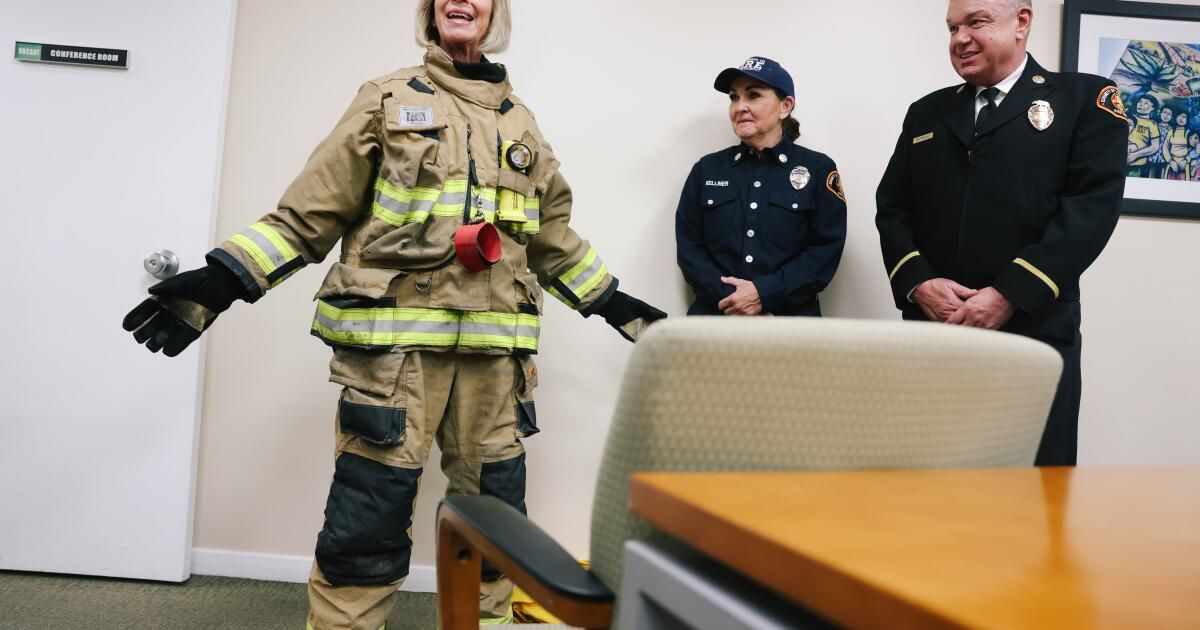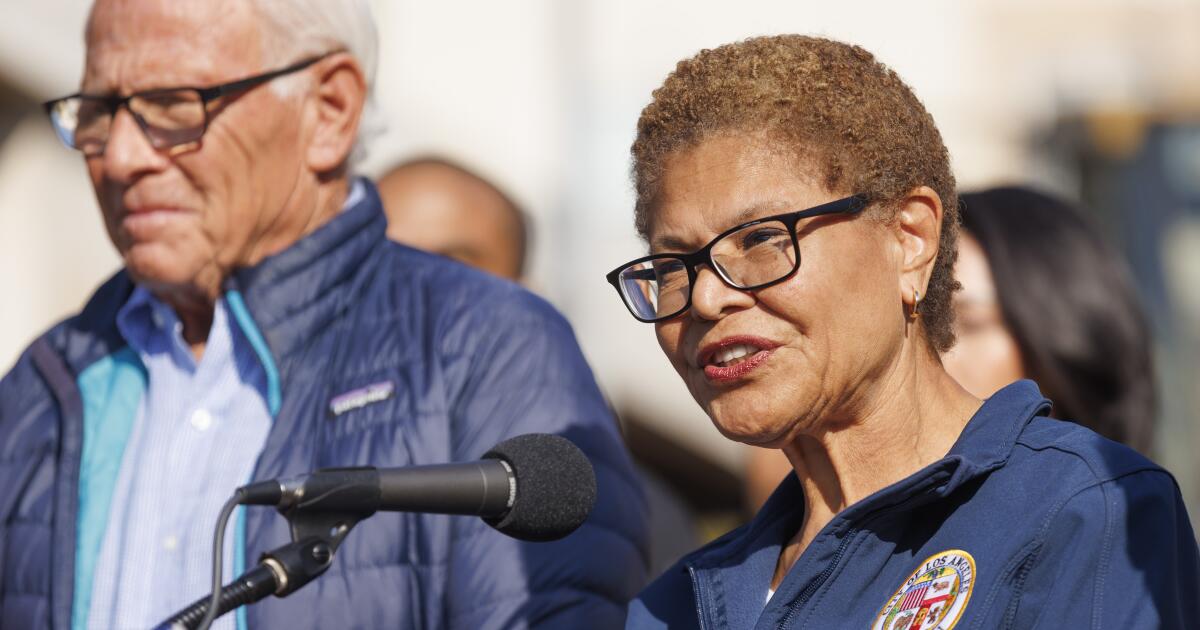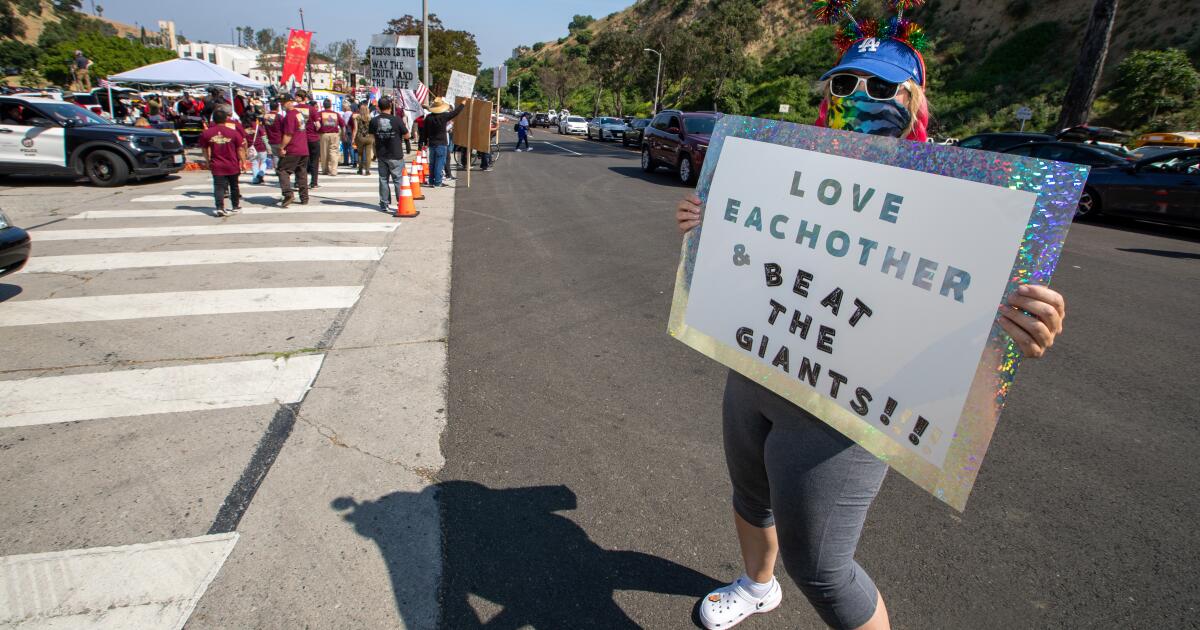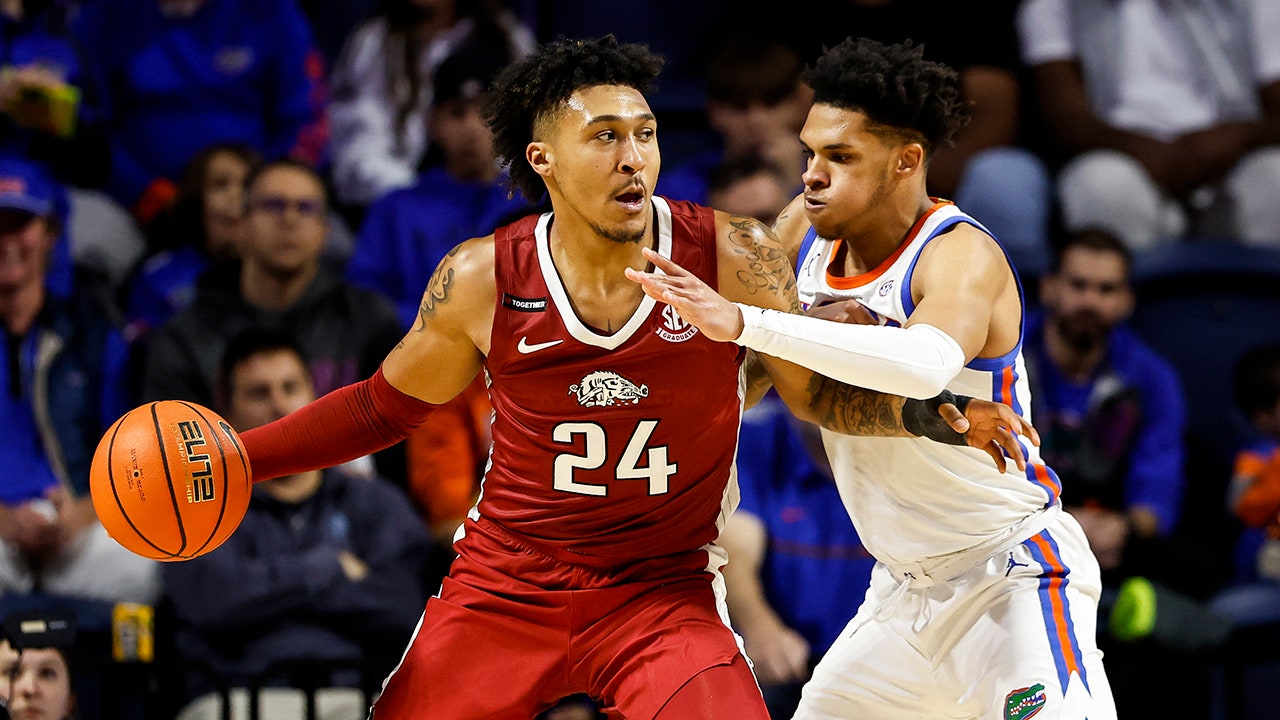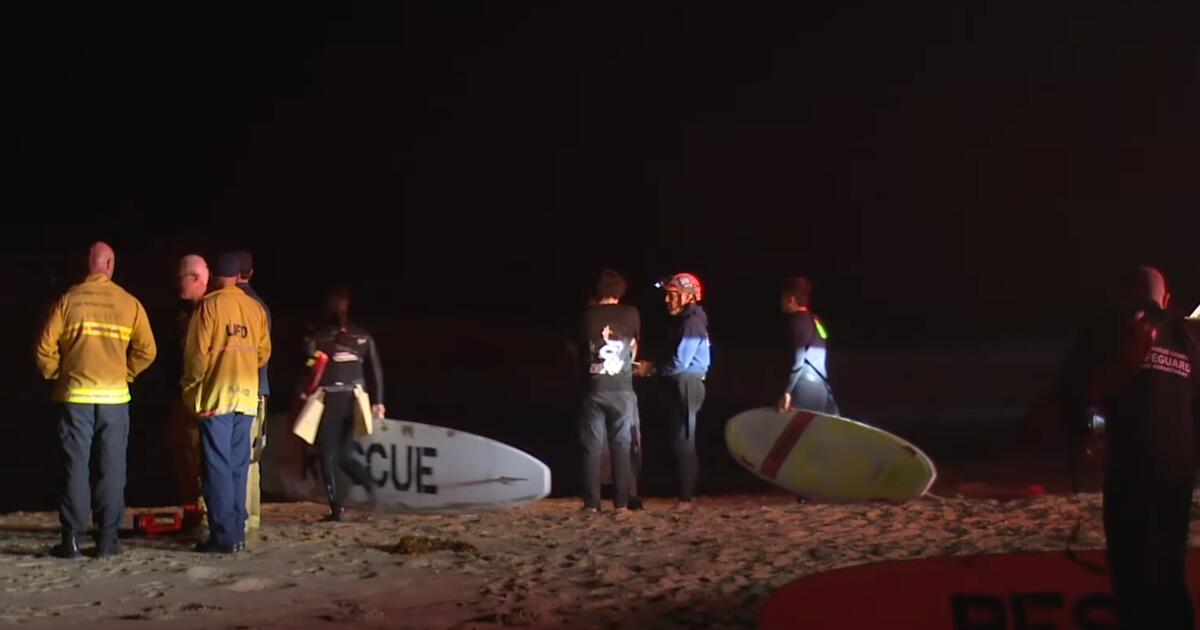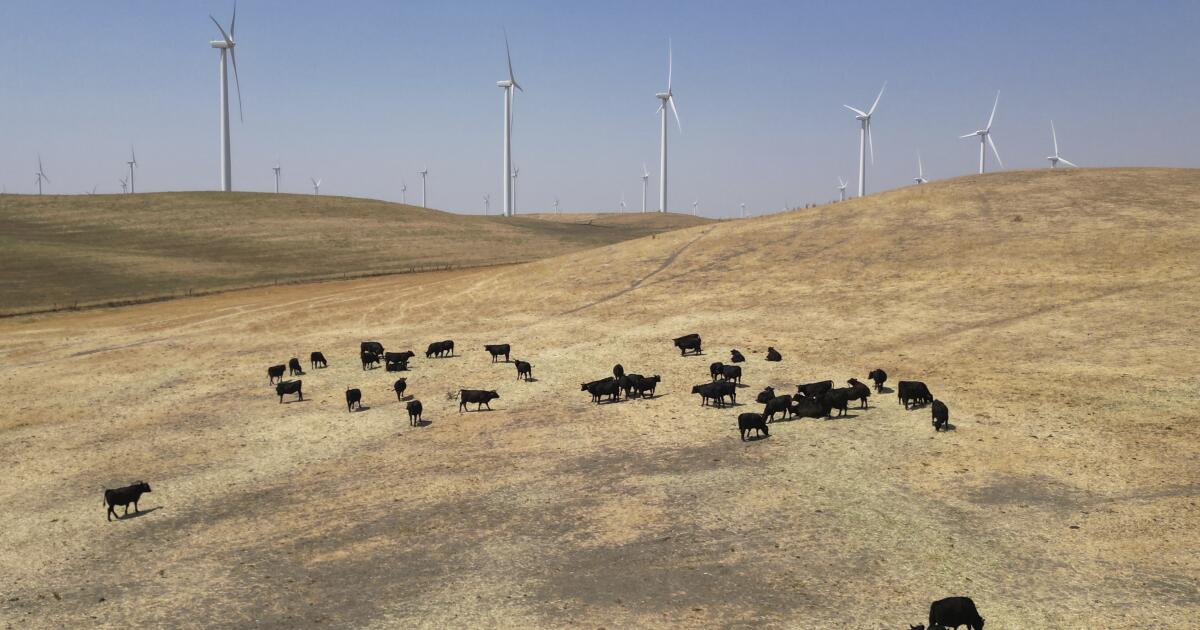When a Los Angeles County firefighter rushes into a burning building to save a life, she must face an additional challenge that her male counterparts don't: her uniform.
At Tuesday's Board of Supervisors meeting, female firefighters and lifeguards explained to the board how ill-fitting uniforms designed for men restrict their ability to move, are heavier due to unnecessary material and leave gaps that increase risk from being burned by flying embers or by inhalation. smoke which is known to cause cancer.
The supervisors responded by passing a motion, authored by Supervisor Janice Hahn and Chairwoman Lindsey Horvath, that calls for the county Fire Department, in collaboration with its Women's Firefighters League, to develop a plan within 60 days to offer to female firefighters, paramedics and lifeguards uniforms and personal protective equipment. equipment made to measure.
Supervisor Janice Hahn with firefighters. “Us five women on this board, we have your back and we have your hips,” Hahn said.
(Dania Maxwell / Los Angeles Times)
Supervisors will also send a letter to manufacturers demanding better options for female firefighters.
“It's a safety issue for our women in the Fire Department; it's also a safety issue for those they are working to rescue in a split second,” said Hahn, who tried on a uniform before the meeting. “I think the fact that they have to pull up their pants or do something different to do a very simple move has been a hindrance. … I want you to know that us five women on this board, we have your back and we have your hips.”
The county Fire Department, one of the largest metropolitan emergency services agencies in the country, remains overwhelmingly male and white, despite repeated calls from supervisors and groups representing women firefighters and firefighters of color.
Of about 3,000 firefighters, only about 80 are women, according to agency data. That's up from 45 in 2017, when Hahn and other supervisors expressed dismay at the department's paltry number.
The lack of women, firefighters and industry leaders say, has contributed to the lack of uniform options.
Los Angeles County Fire Chief Anthony Marrone said manufacturers have told him there is no blueprint for women's work pants or that if a manufacturer makes uniforms and personal protective equipment for female firefighters, they require the fire department purchased them in a bulk purchase of $100,000.
“This is an issue of uniform and PPE inequity that we must address as we move forward to not only hire but also retain and promote our women in the fire service,” Marrone said.
Battalion Chief Sara Rathbun, president of the Los Angeles County Women's Firefighters League, said the department only began receiving female firefighters in the 1980s. When it started in 2006, the department had about 20 female firefighters. Rathbun said.
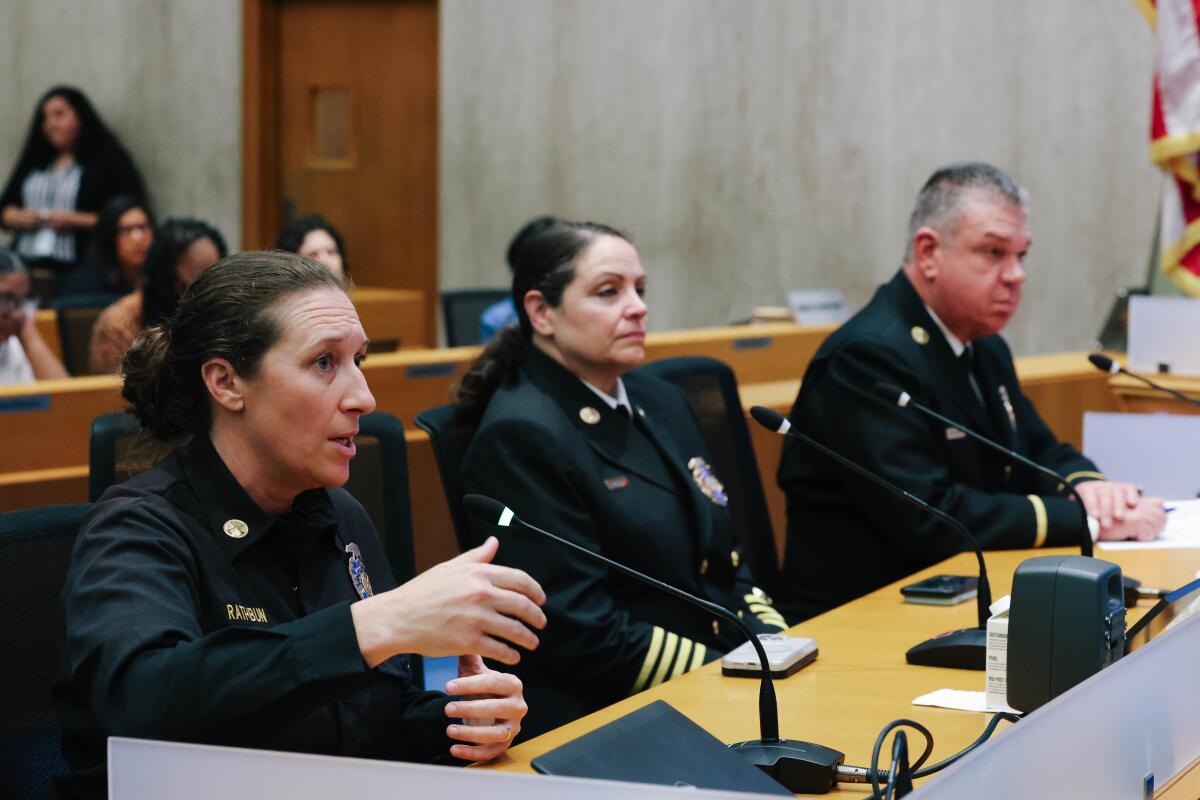
Los Angeles County Fire Department Battalion Chief Sara Rathbun (left) addresses supervisors during Tuesday's board meeting.
(Dania Maxwell / Los Angeles Times)
Rathbun said the fire service as a whole is slow to change as it is “very traditional.”
“That tradition is really maintained and pushed forward in wonderful ways that are profound and culturally rewarding,” Rathbun said. “And then there are other ways that it doesn't serve us, and we have to fix those.”
Although Rathbun and her female colleagues take measurements for their uniforms, manufacturers take their measurements and apply them to a male pattern, meaning the inseam is often too long and a person's hips and bust are not even taken into account. .
Los Angeles County firefighters typically wear their station uniforms and then don their yellow gear over that uniform during structure fires.
None of the capes are made for the female form, meaning firefighters have multiple capes that restrict their movements when jumping off docks toward boat fires, climbing through windows with limited mobility, or advancing with a hose while crawling. on the floor of a burning structure. because the air is too hot to stand upright.
“For us women, we really need to focus more on our technique in everything we do (how you pull tights, how you pull stairs) and when you have restrictions, especially in your pants, it eliminates the ability to do the exercise.” . proper technique sometimes,” said Los Angeles County firefighter and paramedic Siene Freeman, who serves as health and wellness officer for the Women's Fire League. “And then you're at greater risk of injury, you're at greater risk of not being able to do the job that needs to be done the way it needs to be done in the same amount of time.”
Danielle McMillon, section chief of the Los Angeles County lifeguard division, said their uniform includes shorts designed for men.
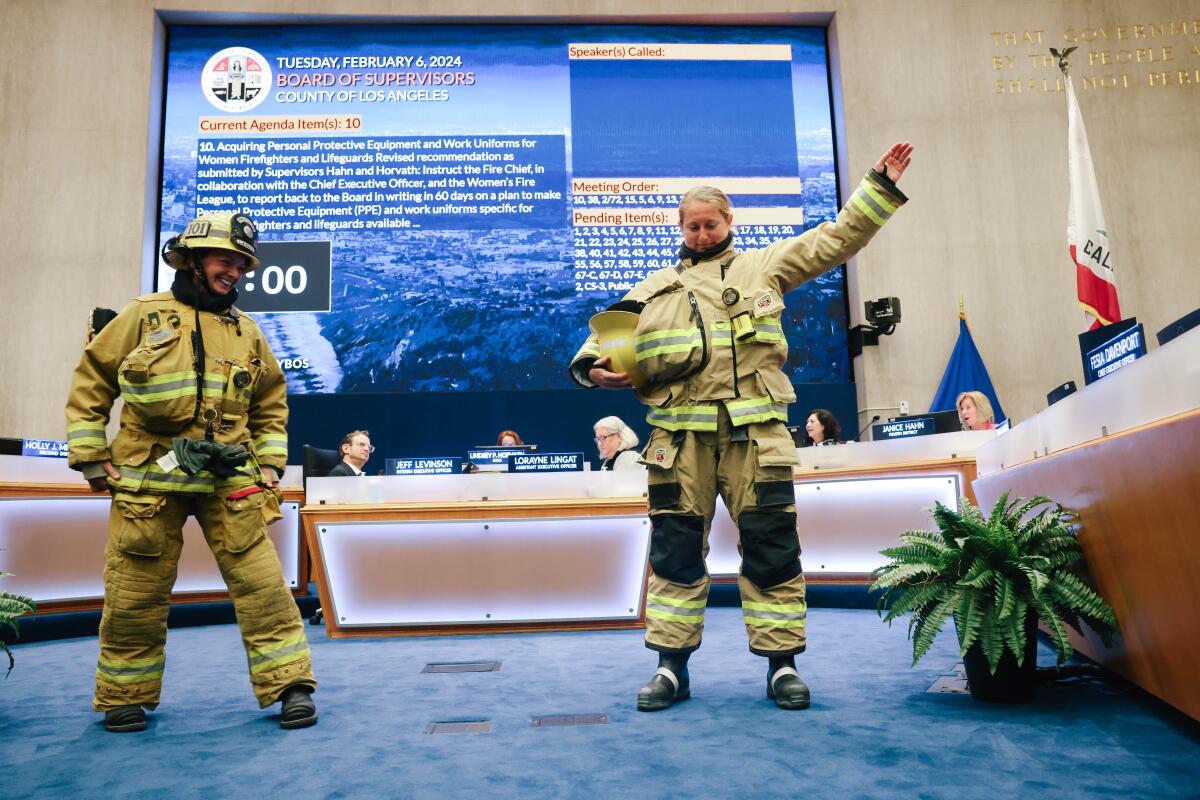
Female firefighters demonstrate specific concerns they have when using personal protective equipment designed for men.
(Dania Maxwell / Los Angeles Times)
When the department recently purchased shorts made for women, they were only available up to size 13, in children's sizes.
“So whatever measurements they use to make these shorts, they'll fit like a teenager,” McMillon said. “When I asked questions, they said, 'This is the industry standard for swimsuits.'”
Newsletter
Get all the information on Los Angeles politics
Sign up for our Los Angeles City Council newsletter for weekly insights, scoops and analysis.
You may occasionally receive promotional content from the Los Angeles Times.
Even as increasing numbers of women enter the field, there has been little progress in manufacturers considering female firefighters in the way they design their equipment, said Lynn M. Boorady, who heads the design and marketing department at Oklahoma State University.
Boorady, who began researching technical equipment in 1991, said that in his research he discovered that several companies only offer two inseams or sleeve lengths.
Boorady said he was surprised to find that most companies make gear up to size 7X, about a 64-inch waist, but few make gear smaller than a 30- to 32-inch waist size.
Because of these equipment and uniform issues, it is more common for female firefighters to suffer injuries, Boorady said.
“The number one health problem among firefighters and firefighter deaths is heat stress, heat stress that can cause strokes,” Boorady said. “So you're already wearing something that is extremely heavy in extremely high temperatures, and now it weighs more than it should because it's too big. “You are working harder than anyone else because what you are wearing is not appropriate.”

